How far apart to space bulbs in a pot – for healthy growth and fabulous color
Giving your potted bulbs enough space to grow well will produce brilliant displays in the fall
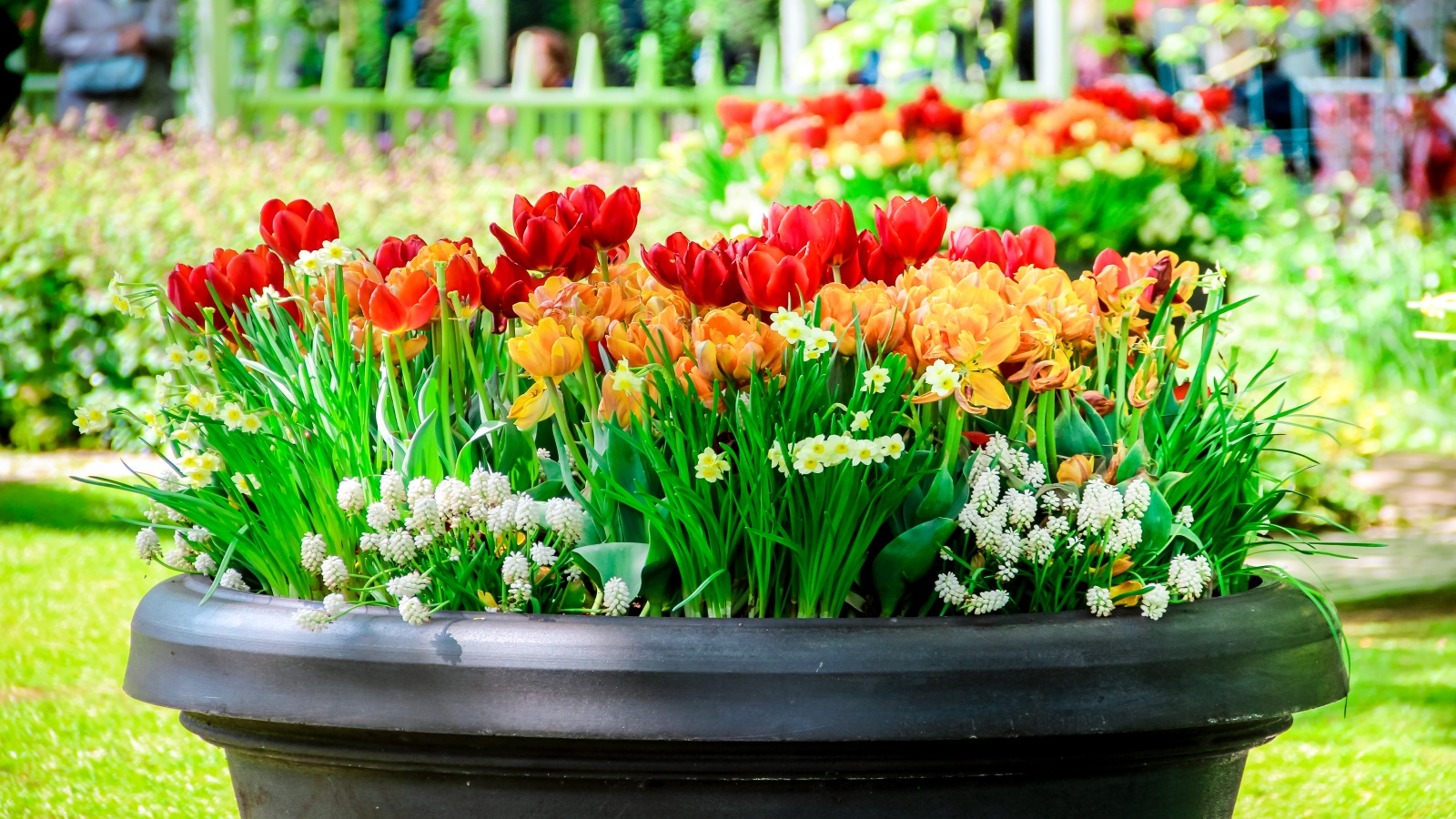
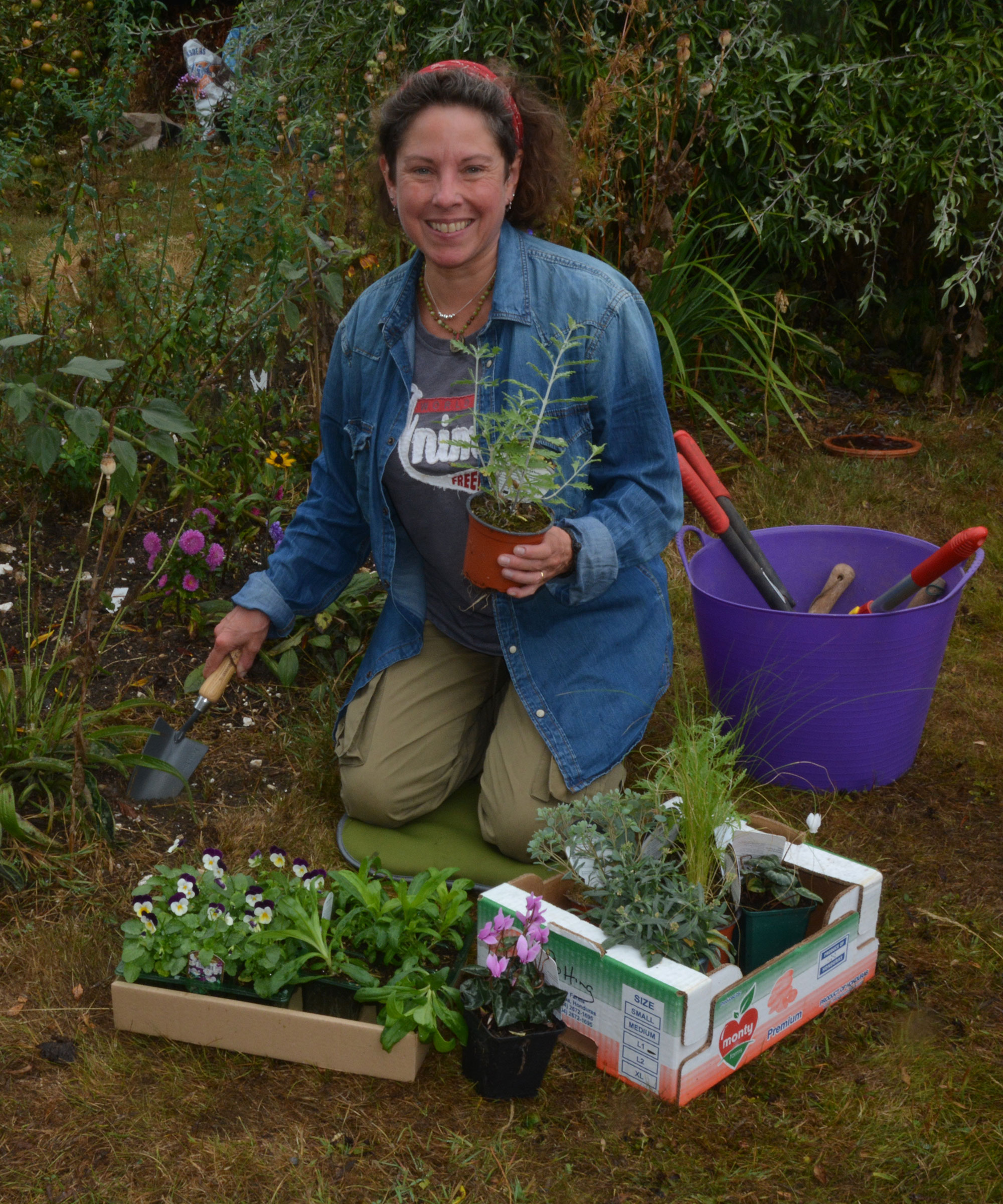
Knowing how far apart to space bulbs in a pot will ensure that your spring blooms thrive, giving your planting schemes an edge and creating the best possible display.
Bulbs grow well in pots, and in the fall we tend to plant snowdrops, daffodils, tulips, fritillaries and crocus, which all produce brilliant and vibrant displays. In the spring, you can plant canna lilies and agapanthus, while in early summer, it is time to plant autumn-blooming crocus, nerines and cyclamen. Whatever, you choose to grow, knowing how to space the bulbs is important.
Planting bulbs too close together or too far apart is one of the most common bulb-planting mistakes, but easy to avoid when you know what to do. Here, our guide has all the information you need to succeed.

Different sized bulbs need different spacings and getting that right will make all the difference to your planting scheme
Placing your bulbs the right distance apart in pots helps avoid overcrowding, which can diminish growth and flowering. It also prevents under-planting, which makes your containers look sparse and threadbare. It also gives bulbs space to mature, grow and develop offsets that can be detached and planted independently to increase your plant stocks. Here, we explain the right planting distance for different bulb sizes.
1. Small bulbs

Crocuses are just one of many small-bulbed plants that grow beautifully in a container
Some of the best spring bulbs to plant in the fall are the smallest varieties such as crocus, Iris cristata, Muscari and early-flowering glory of the snow, which look impressive when grown in a pot.
The same applies to species tulips, which are smaller and hardier than bedding tulips, and small varieties of alliums.
For the best results space them roughly 2-3 inches apart, though you can grow them closer together in smaller containers and still get a 'wow' display.
Crocus bulbs are available from Walmart.
2. Medium sized bulbs

Daffodils and tulips planted together in a pot can offer a wonderful contrast of shapes and colors
Medium-sized bulbs such as the myriad varieties of standard-sized tulips and narcissus (daffodils) should be planted 3-4 inches apart, although again, they can be closer together in containers.
Tulip and daffodil bulbs often produce bulblets, or offsets, as they mature, and after a few years may need digging up and splitting to avoid overcrowding.
The offsets can be planted independently to create their own display.
Tulip bulbs are available from Walmart.
3. Large bulbs
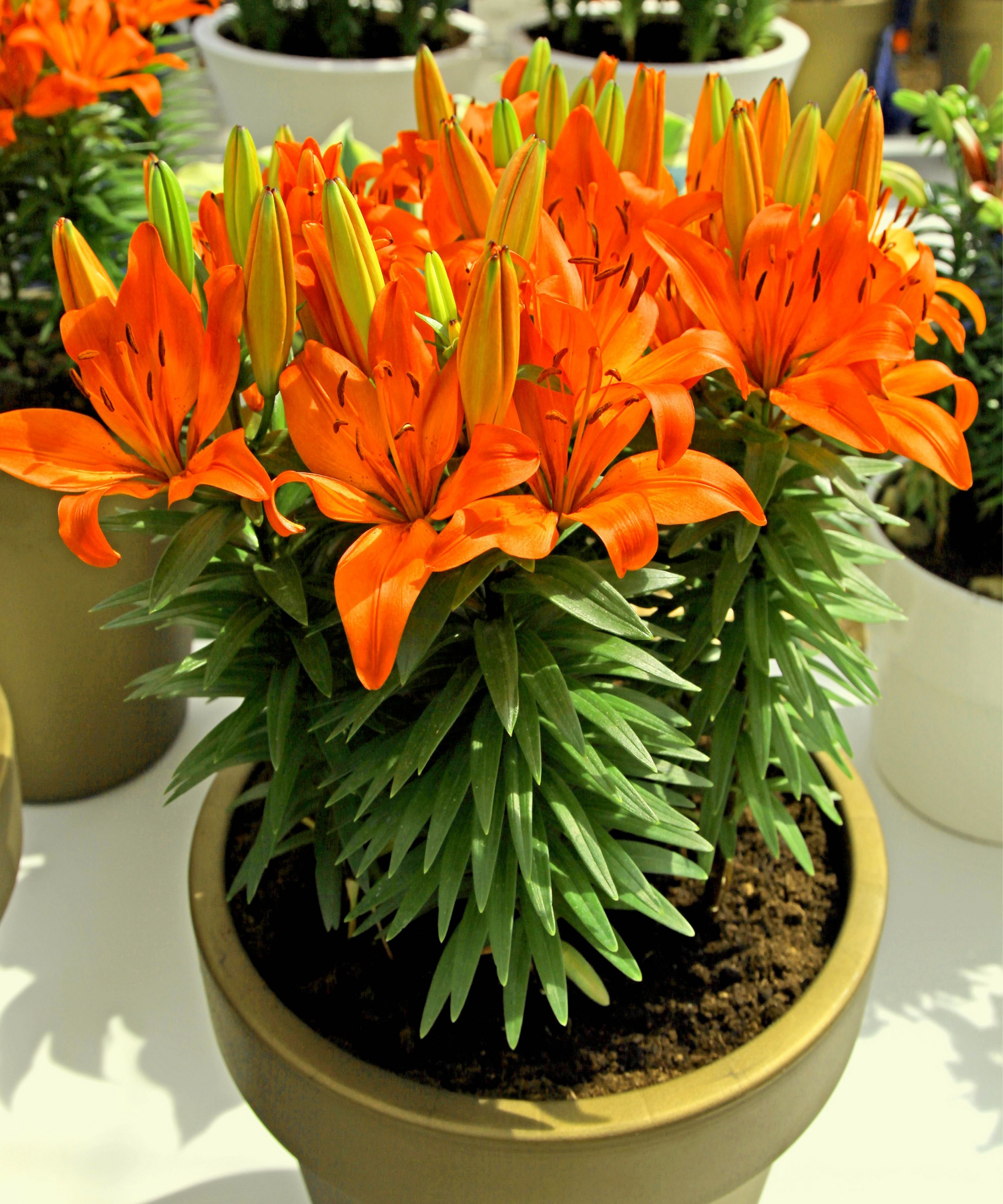
Plant lilies in pots in the fall for a dramatic display next summer
Larger bulbs such as lilies, big alliums such as 'Globemaster', hyacinths and fall-flowering nerines need a bit more breathing space, so give them around 4-6 inches between each other.
Nerines, which are planted in early to mid-summer, should have their 'nose' poking just above the top of the potting soil.
As with all bulbs, planting in odd numbers helps to create a more natural and relaxed display, as you have less of a tendency to plant in identically-sized, regimented rows.
4. Indoor hyacinths
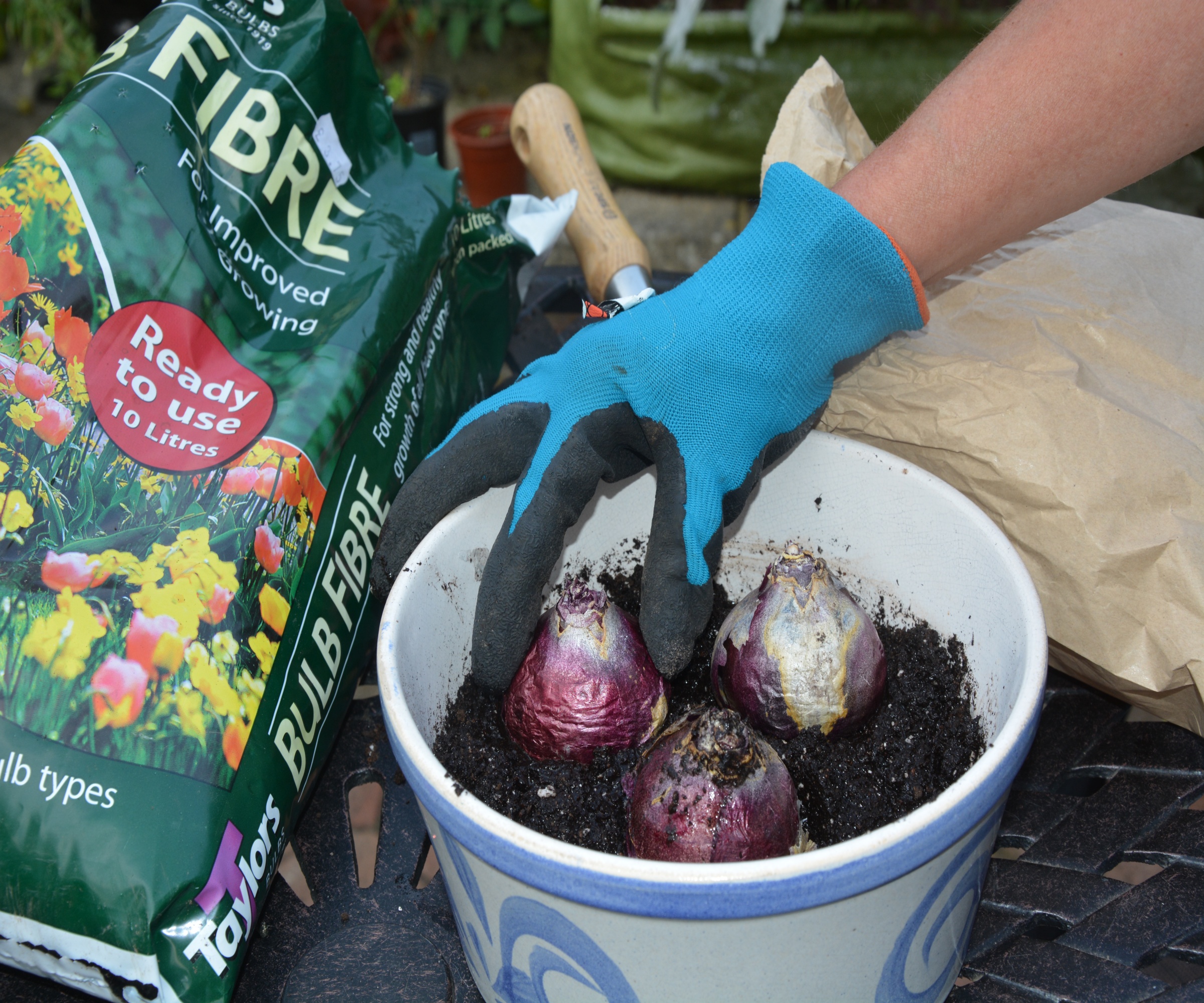
Forced hyacinths bring welcome color and scent to the winter home
Planting hyacinth bulbs indoors in the fall is a wonderful way of adding spectacular scent and color to the home in the new year. Hyacinth bulbs are available from Walmart.
These are bulbs that have been ‘forced’, put through an artificial spell of cold so they ‘think’ they have been through winter and start to shoot and bloom several weeks earlier than those in the garden.
Indoor hyacinths and other forced bulbs are planted in bowls of bulb fiber or multipurpose potting soil and should be set close together, but not touching.
When I plant forced hyacinths I usually leave a half-inch gap between each bulb.
I then cover most of the bulbs with bulb fiber, so just the tips are poking out, lightly dampen the fiber, and place the pot in a dark drawer or cupboard for a few weeks, checking regularly and re-wetting the compost if needed.
When the bulbs start to grow, bring them into the light and set them somewhere cool and bright. The shoots will start yellow but soon turn a healthy green.
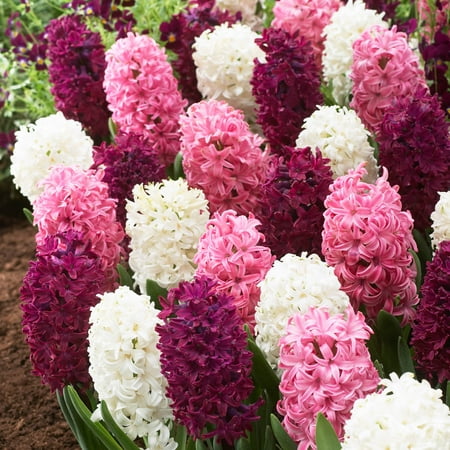
For showstopping blooms, try growing these pink, red and white hyacinth bulbs in a container. What's more, the heady aroma is a sign that spring is here.
5. Common potted bulb problems
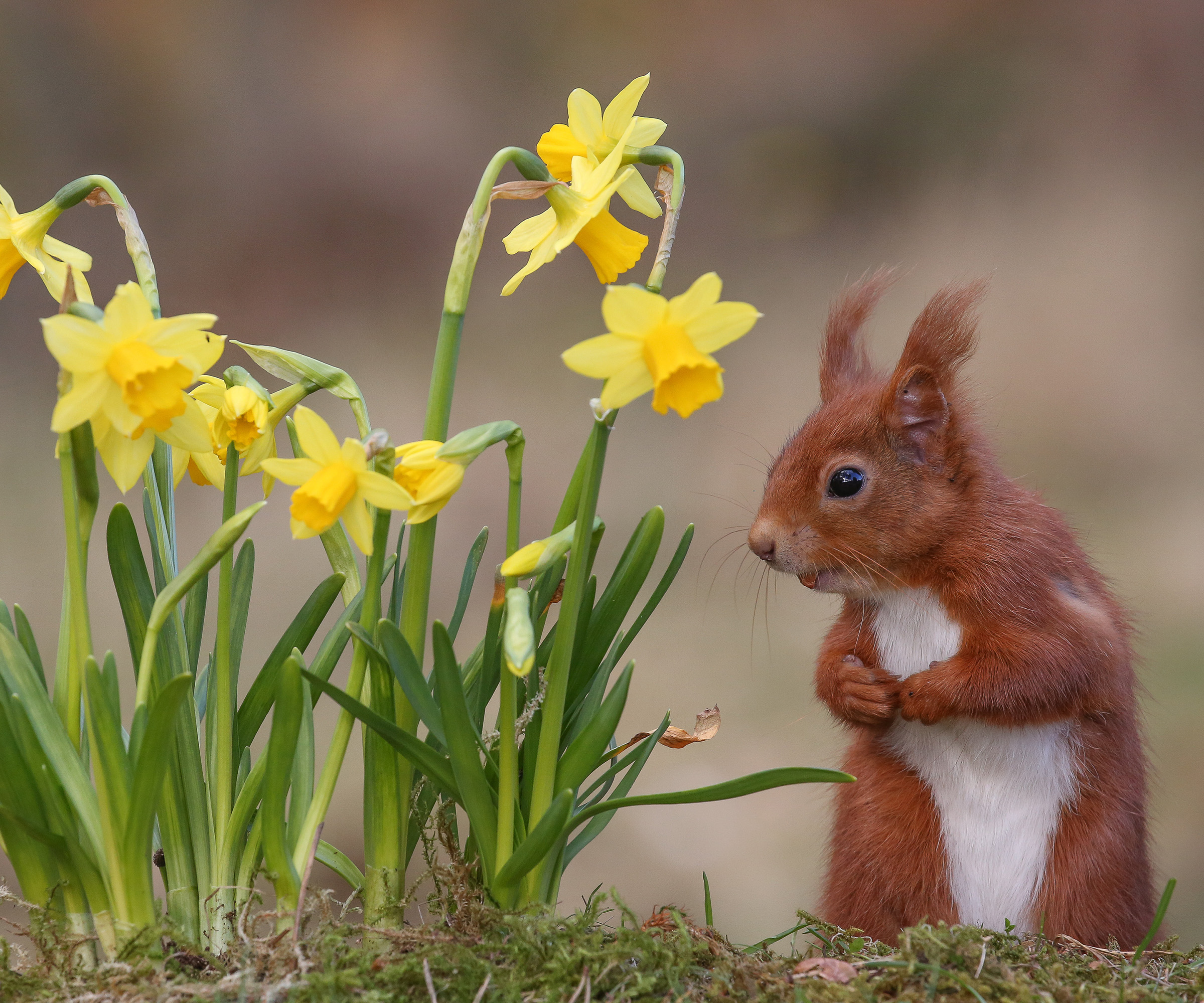
Squirrels are a menace and will unearth and eat bulbs if they can
Planting bulbs in pots can have just the same problems as planting in the soil, but knowing how to deal with them will help keep your bulbs safe.
One of the main enemies of bulb planting is squirrels, which love to dig up and eat our precious bulbs, often as soon as they have been planted.
There are several ways of stopping squirrels from finding and digging up bulbs, and one of the easiest things to do is to keep your bulbs in a bucket as you plant, so their scent stays off the ground.
Another common problem is when bulbs produce plenty of leaves but fail to flower. This 'blindness' usually happens because they haven’t been planted deeply enough, are in a spot with poor soil, or aren’t getting enough sun.
The best solution is to dig them up once the leaves have died back and replant them at the correct depth in fresh potting soil with added fertilizer.
When the bulbs start to appear next year, move their container to a sunny, sheltered spot for the best results.
FAQs
What potting soil should I use?
Your bulbs will thrive in a good multipurpose potting soil with an added granular fertilizer such as this Burpee Natural Purpose Granular Organic Food from Amazon.
Bulbs are prone to rotting in wet conditions so add some grit or perlite to open up the potting mix and improve drainage, and always raise your pots off the ground so excess water can run away. These heavy-duty pot elevators on Amazon are a great way of getting rid of surplus moisture and keeping your bulbs safe.
Should I feed my bulbs in pots?
Once the flower buds form, feed weekly with high-potassium tomato fertilizer to encourage healthy blooms. After flowering, continue to feed with a general-purpose fertilizer as the leaves die back, as this will help strengthen and nourish the bulbs for next year’s display.
My bulbs are increasing, what should I do?
This is good news because it means the plants are healthy and maturing. If the clumps get too large or aren’t flowering as well as they used to, carefully dig them up when they have finished flowering and the leaves have shriveled back.
Gently separate the bulbs and remove young bulblets from the parent bulb, before replanting the bulbs in pots or smaller groups around your garden. Discard any that look rotten, are soft, or have signs of pest attacks.
Always deadhead your potted bulbs as the flowers fade and when they have finished blooming let the leaves die back naturally, as this will feed the bulbs and encourage them to perform well next year too.
They will look scruffy as they die back so move your pots out of the way. Never cut off or knot the leaves as they wither, as this will prevent them from producing energy that is returned to the bulb.
Sign up to the Homes & Gardens newsletter
Design expertise in your inbox – from inspiring decorating ideas and beautiful celebrity homes to practical gardening advice and shopping round-ups.

Ruth is a Contributing Editor for Homes & Gardens, and formerly Gardening Editor of Amateur Gardening magazine. She is horticulturally trained, with a qualification from the Royal Horticultural Society. Her work for Amateur Gardening, the world's oldest weekly gardening publication, involved matching gardening tasks with each season, covering everything from sowing and planting, to pruning, taking cuttings, dealing with pests and diseases and keeping houseplants healthy. She is an expert in ornamental plants and edible crops, and everything she writes about and photographs is in her own garden, that has been a work in progress since her family moved there in 2012.
-
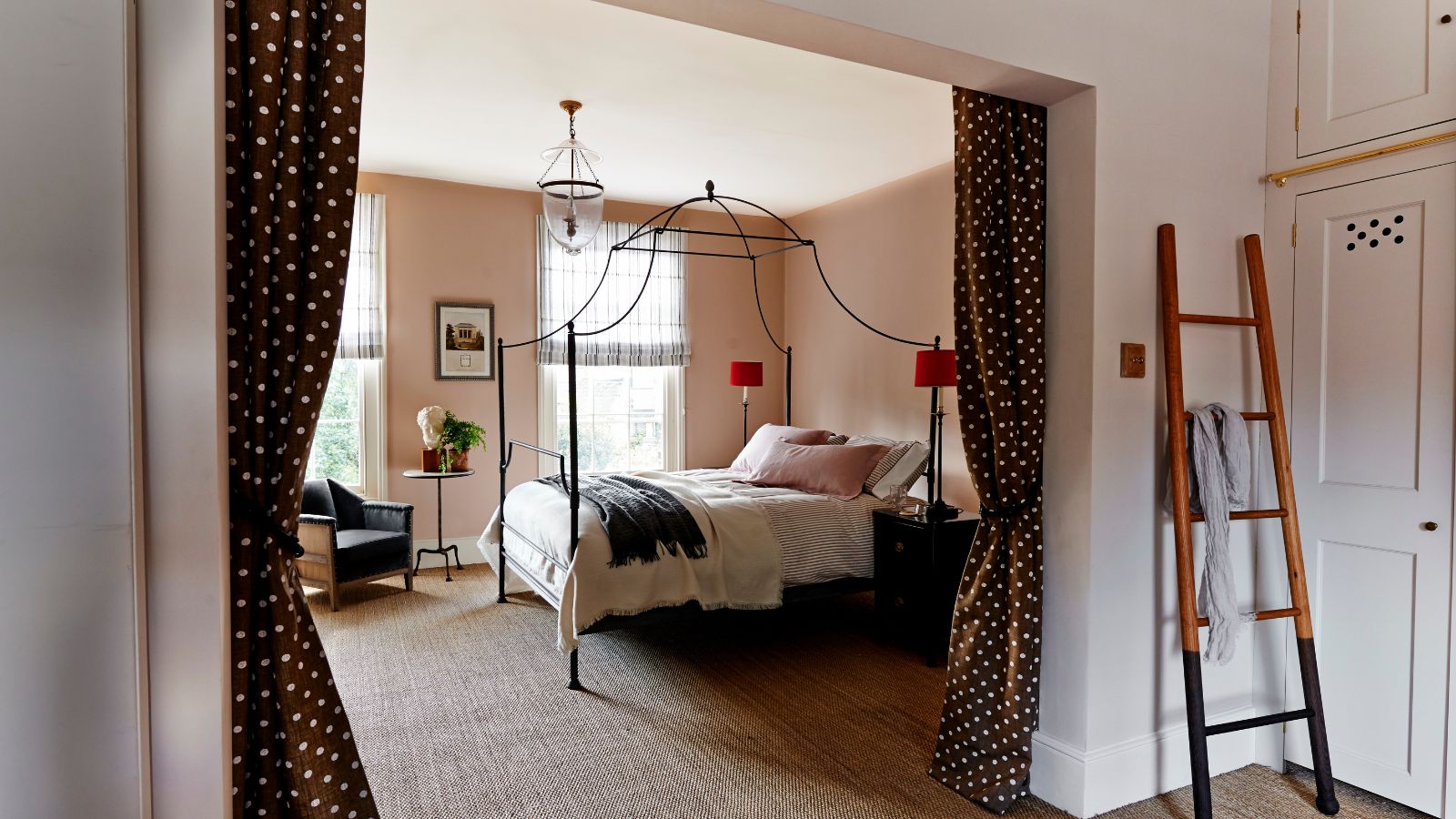 Stripes move over, I have surprised myself by deciding to decorate with dots instead – and designers agree they can be far more sophisticated than you might think
Stripes move over, I have surprised myself by deciding to decorate with dots instead – and designers agree they can be far more sophisticated than you might thinkThey might be known for their playfulness, but I've seen a whole new sophisticated side of this whimsical print
By Eleanor Richardson
-
 Isabella Rossellini's European-designed chef's knives are currently $65 off – and these luxury cooking tools have been around for over 200 years
Isabella Rossellini's European-designed chef's knives are currently $65 off – and these luxury cooking tools have been around for over 200 yearsThese stunning German-made knives have a rich history, including being used in the Conclave actress's kitchen – and they're now on sale at Wayfair
By Sophie Edwards
-
 7 of the fastest growing flowers to plant in spring for early summer blooms
7 of the fastest growing flowers to plant in spring for early summer bloomsSow these seeds now and be greeted with early summer color and repeat blooms in your yard
By Jacky Parker
-
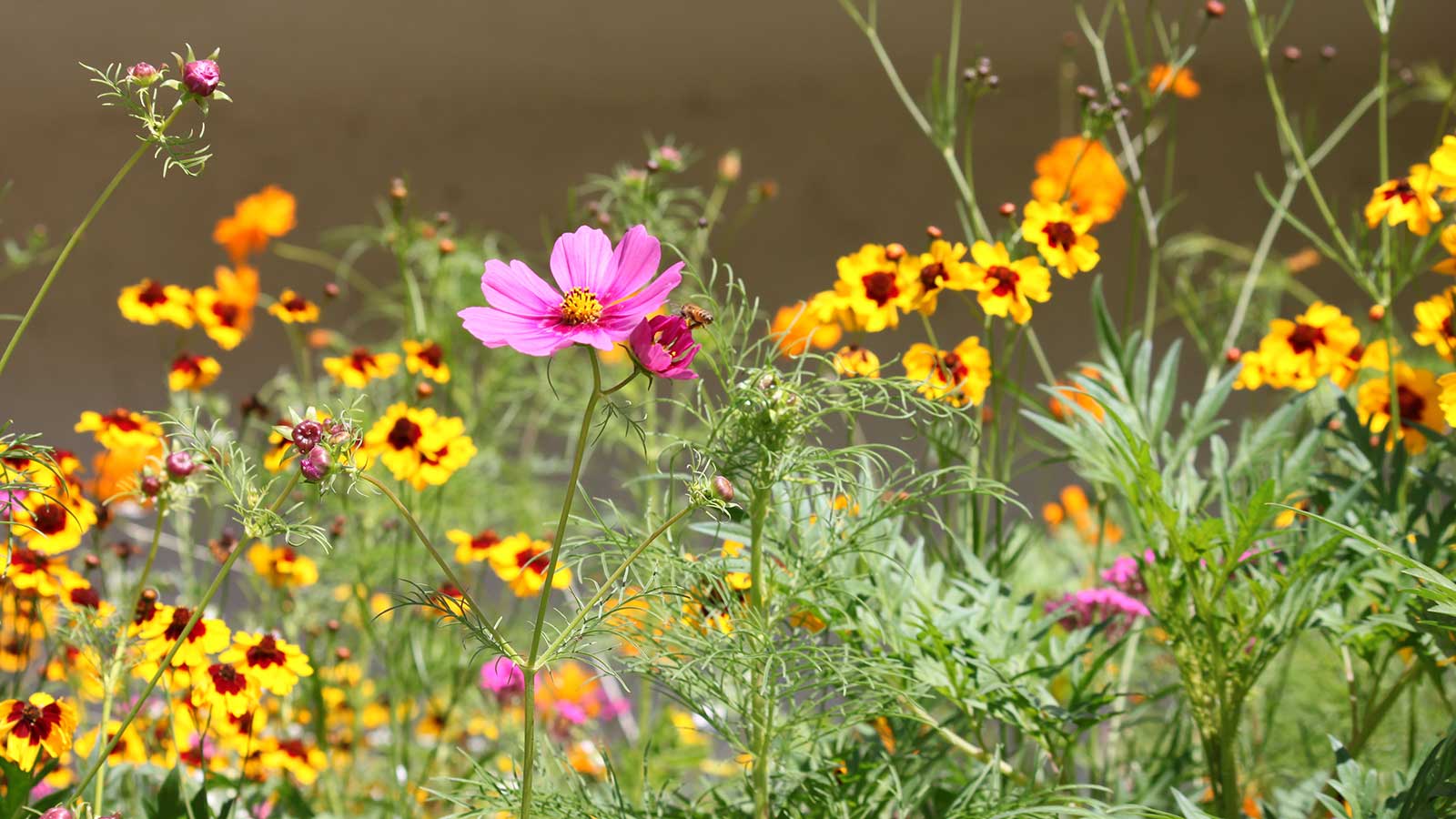 How to design a mini meadow in pots – and welcome birds, bees and butterflies to your urban wildlife garden this summer
How to design a mini meadow in pots – and welcome birds, bees and butterflies to your urban wildlife garden this summerExperts share advice on species recommendations, soil, and types of containers to use for meadow planting
By Holly Crossley
-
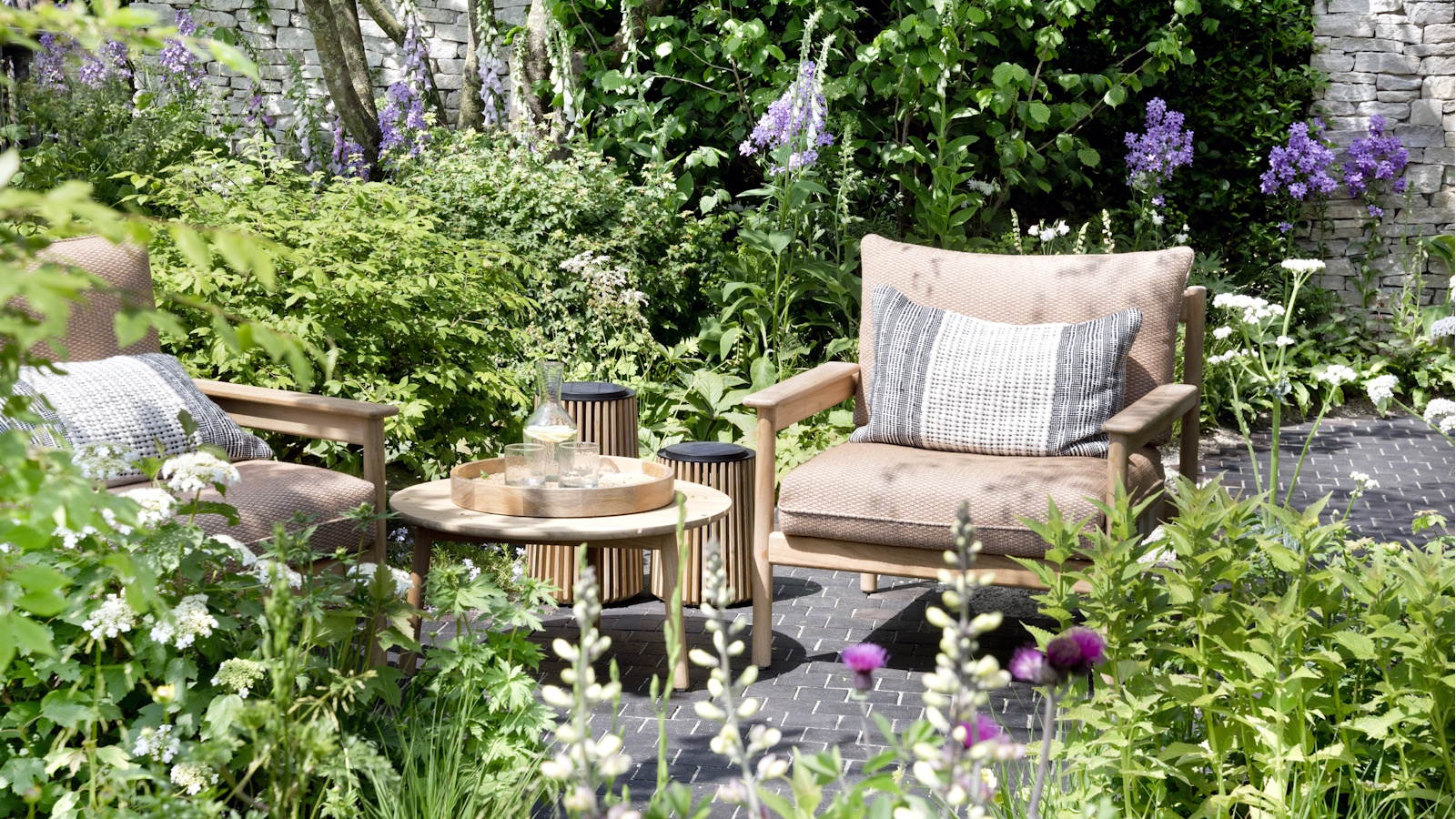 This $20 pop-up greenhouse from ALDI is perfect for small yards – it will turbocharge your tomato harvests this summer
This $20 pop-up greenhouse from ALDI is perfect for small yards – it will turbocharge your tomato harvests this summerEasy to use and compact to store, pop-up greenhouses are ideal for patio or balcony gardeners
By Thomas Rutter
-
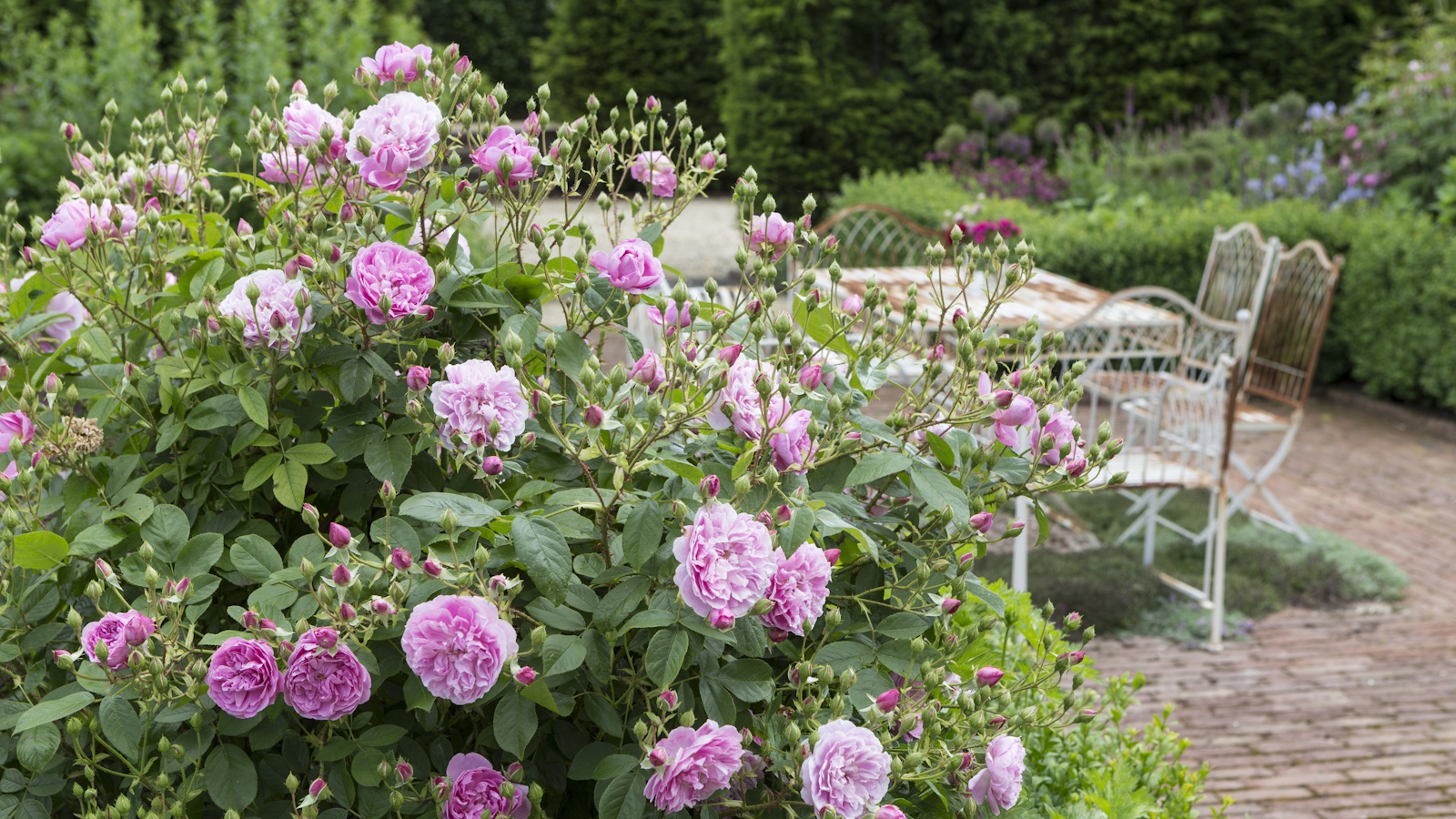 How to weed a garden quickly – professional gardeners reveal the five-minute weeding jobs to do now and get your yard summer-ready
How to weed a garden quickly – professional gardeners reveal the five-minute weeding jobs to do now and get your yard summer-readyShort on time? These time-efficient tasks will keep on top of problem plants
By Thomas Rutter
-
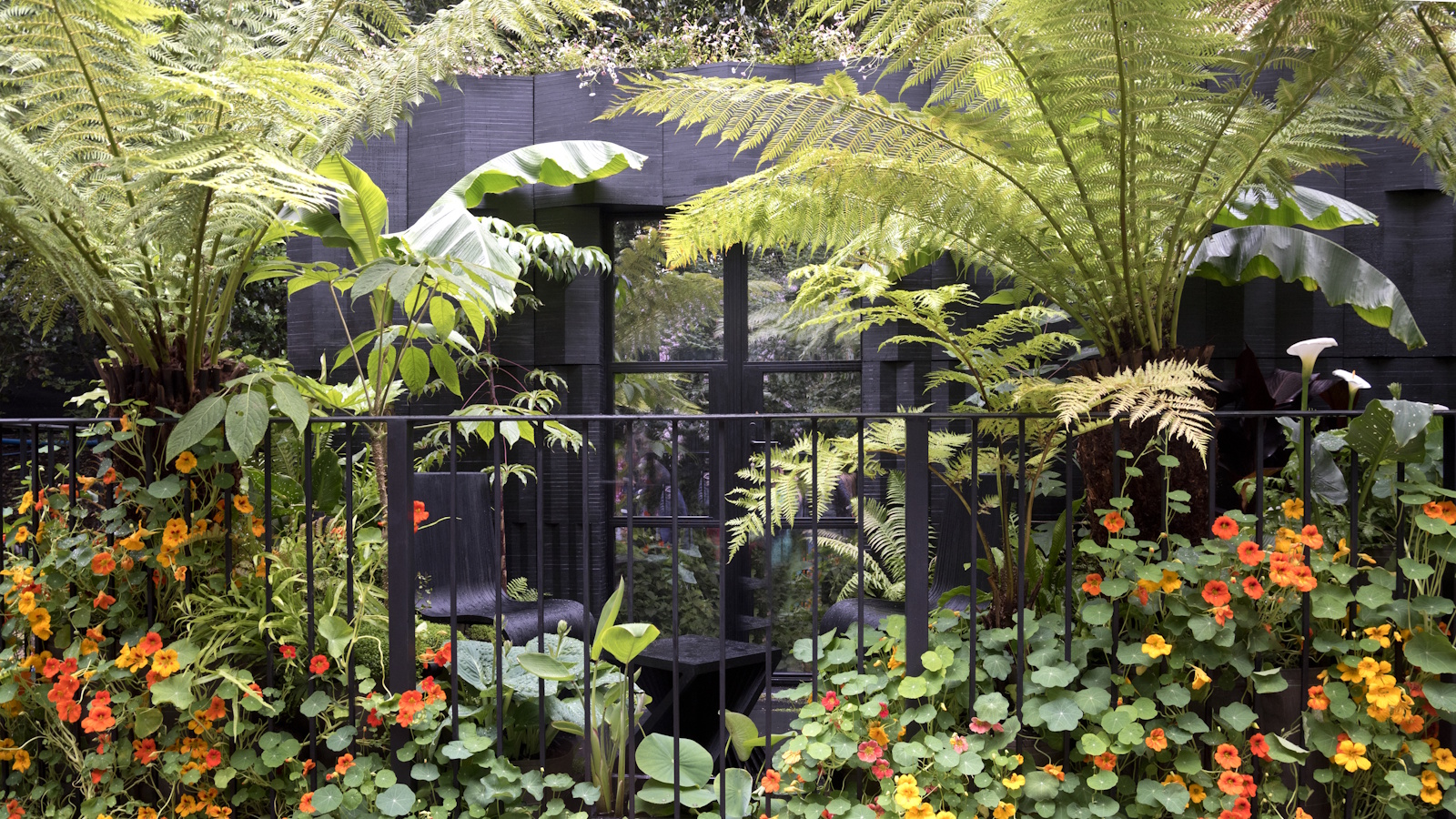 Small yard but want to grow your own crops? This wooden cold frame is 40% off at Wayfair – and it's perfect for tiny patios and apartments
Small yard but want to grow your own crops? This wooden cold frame is 40% off at Wayfair – and it's perfect for tiny patios and apartmentsCold frames are a sensible investment for any gardeners struggling for space on balconies, backyards or patios
By Thomas Rutter
-
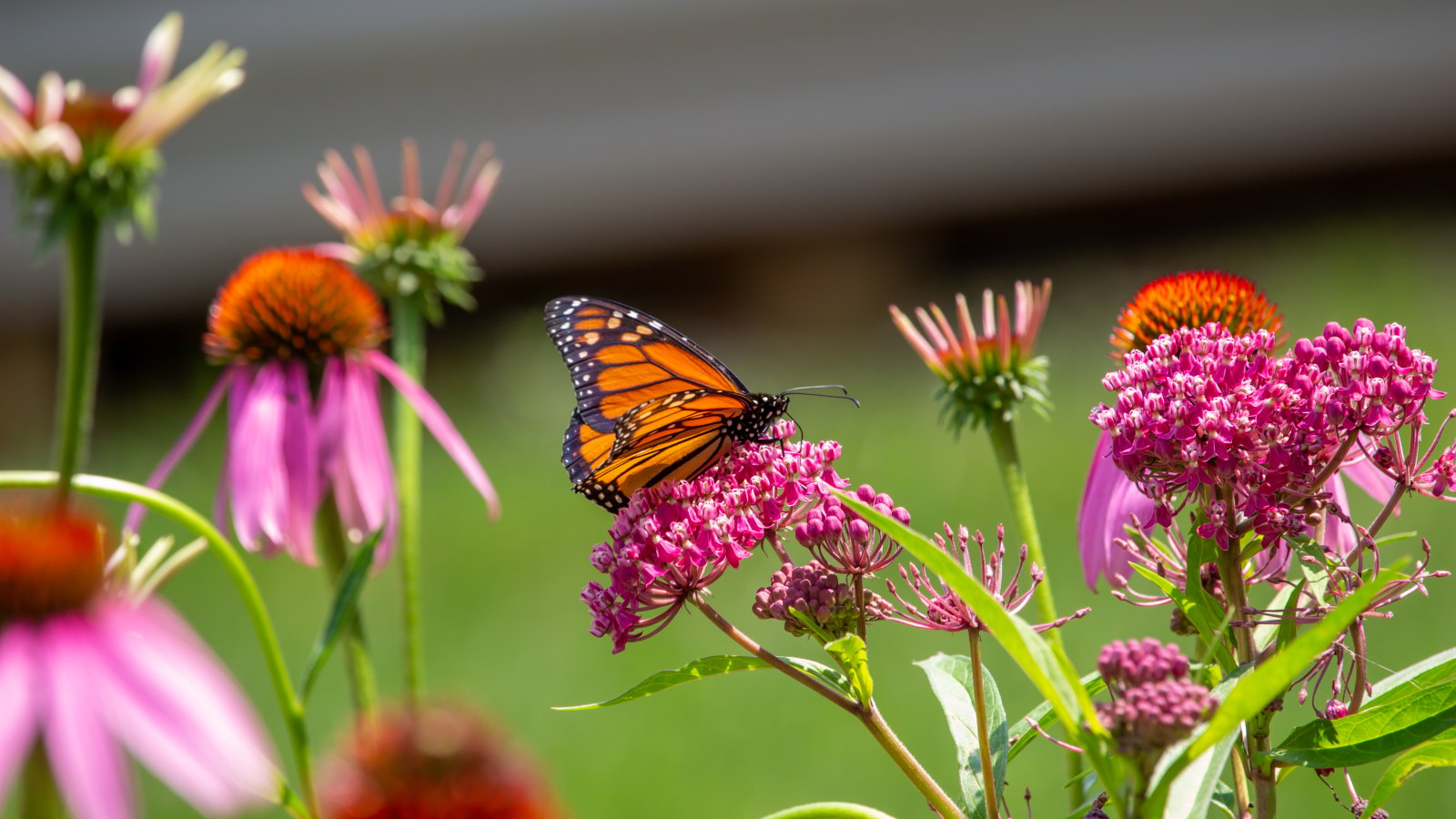 7 native perennials to plant in April – for glorious flowering displays to attract bees, butterflies, and hummingbirds
7 native perennials to plant in April – for glorious flowering displays to attract bees, butterflies, and hummingbirdsDiscover some of the best perennials to plant in April to make your garden a hotspot for wildlife
By Drew Swainston
-
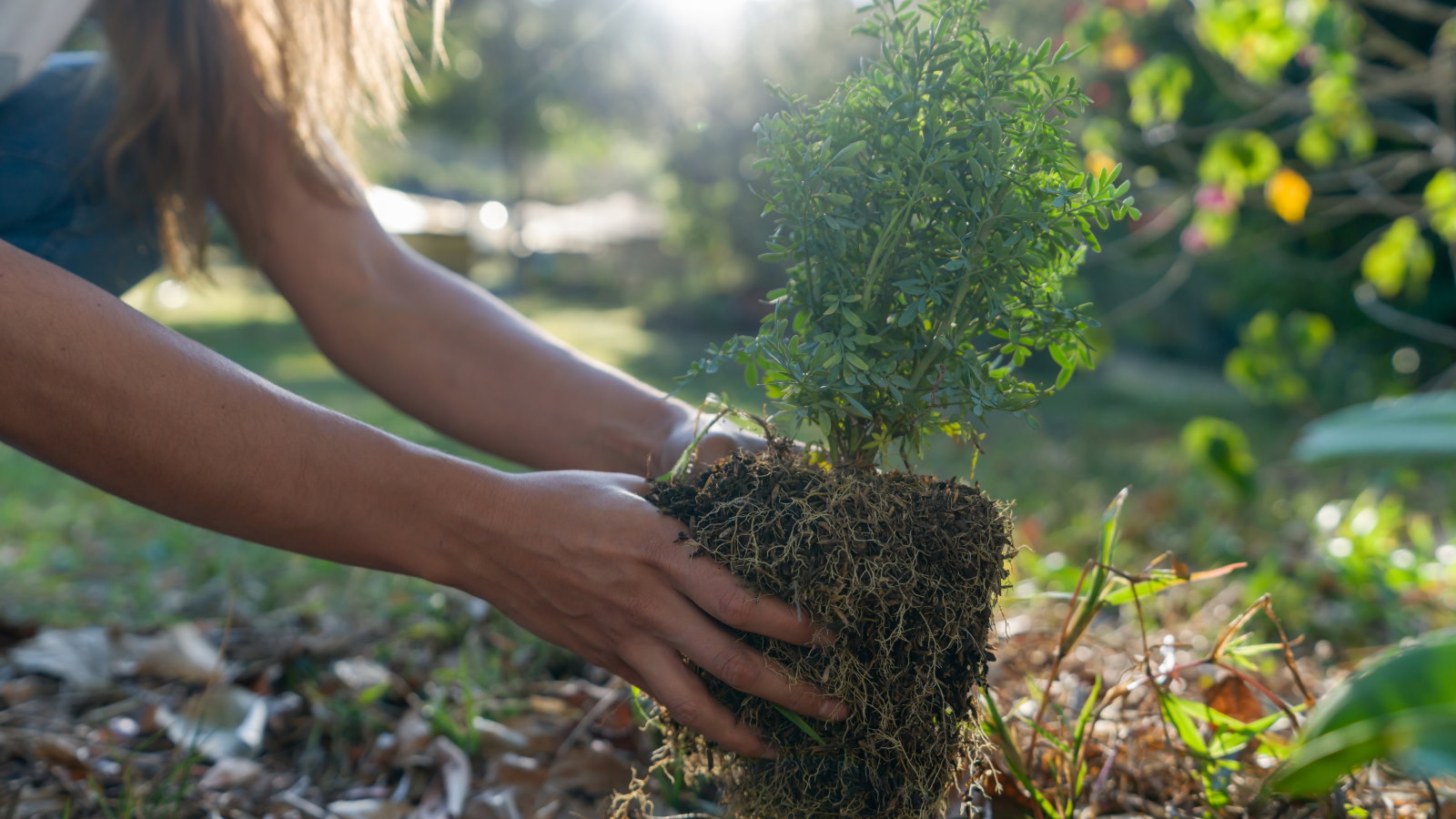 7 shrubs to plant in April to transform beds and borders – including native plants and bushes suitable for dry or wet spots
7 shrubs to plant in April to transform beds and borders – including native plants and bushes suitable for dry or wet spotsThese shrubs can bring flowers, texture, and fragrance, as well as attracting beneficial insects and birds
By Drew Swainston
-
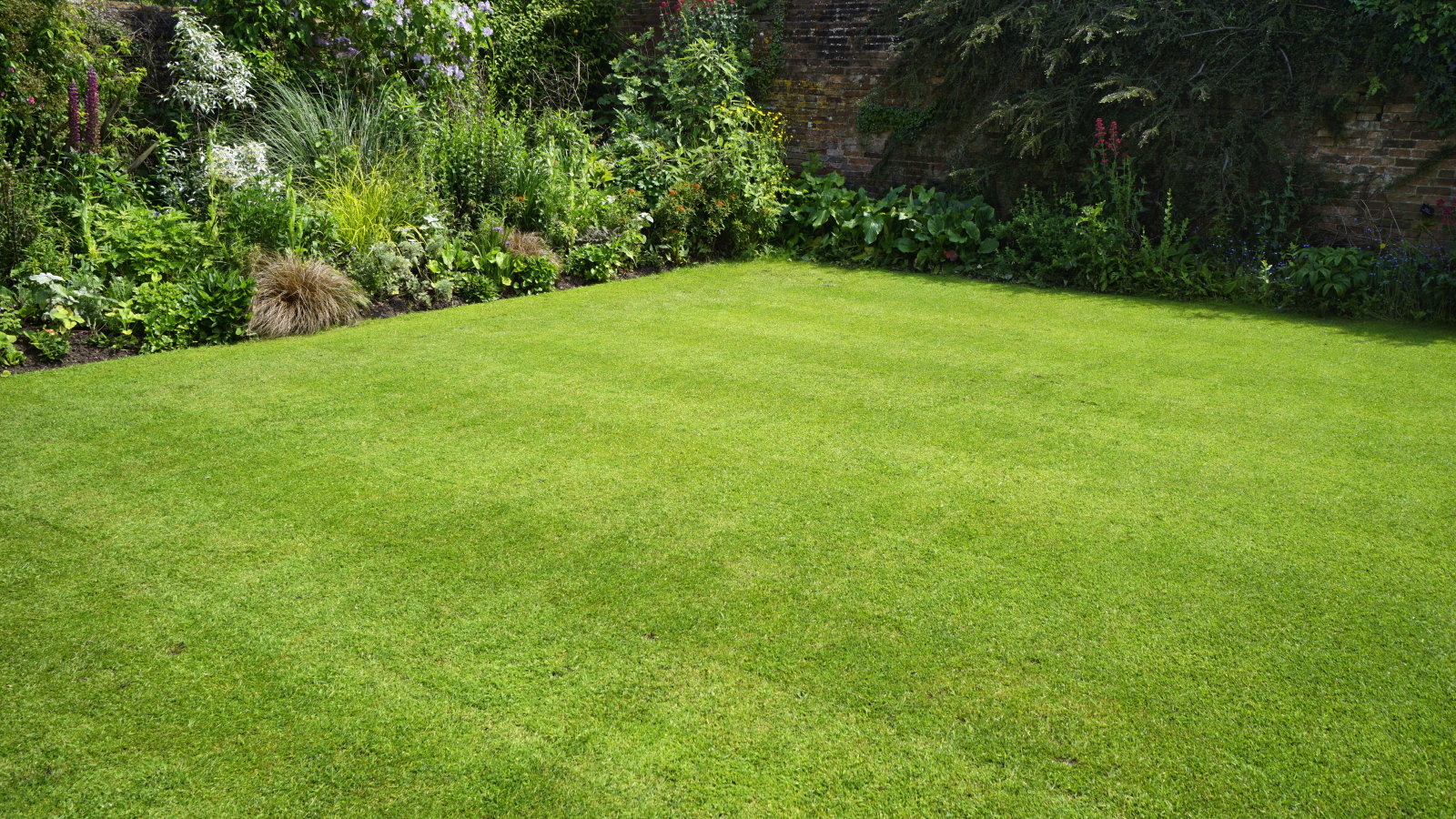 I'm a lawn care expert, and always do these 7 jobs in April to ensure thick, green grass all summer long
I'm a lawn care expert, and always do these 7 jobs in April to ensure thick, green grass all summer longTransform your lawn with these simple yet highly effective April lawn care tasks
By Drew Swainston